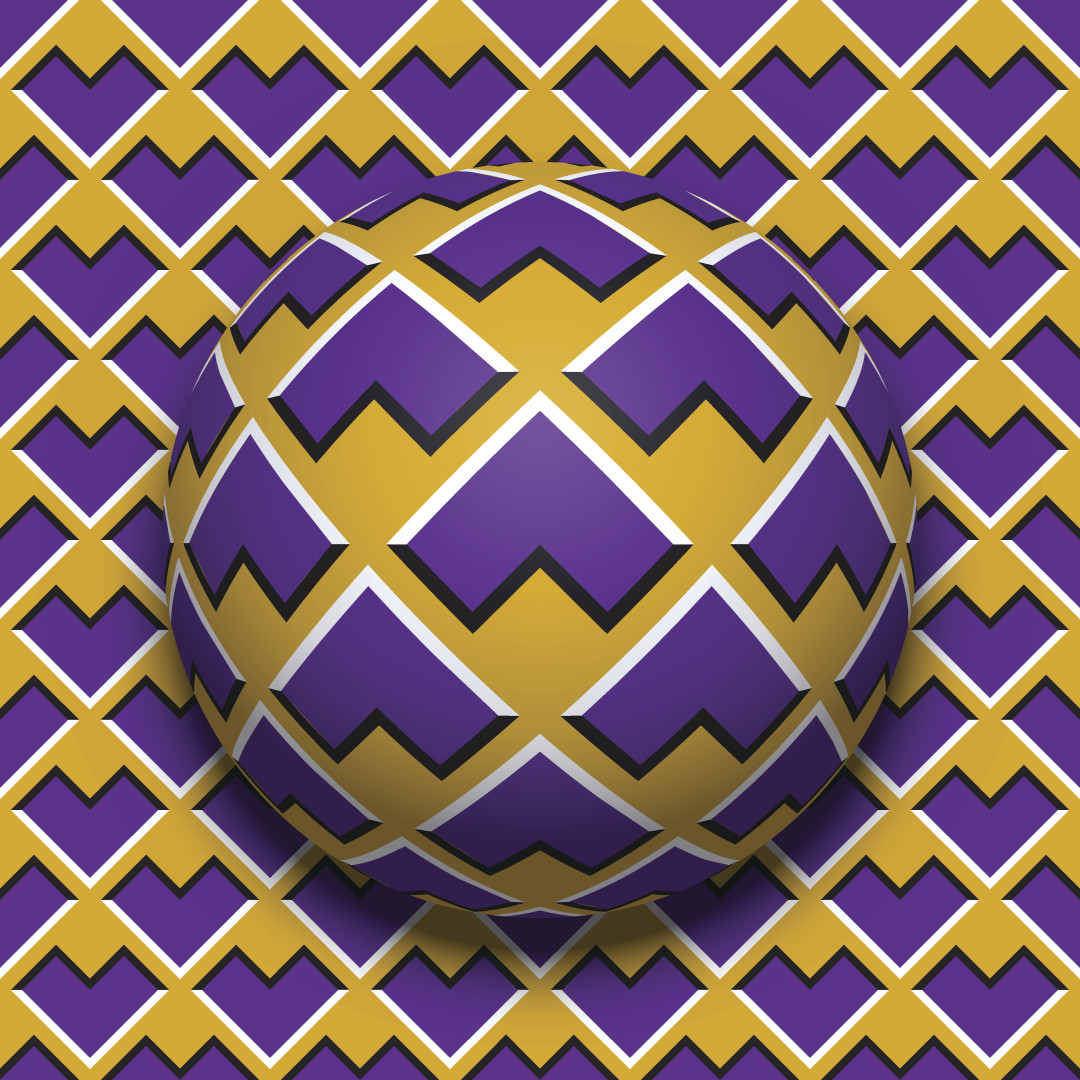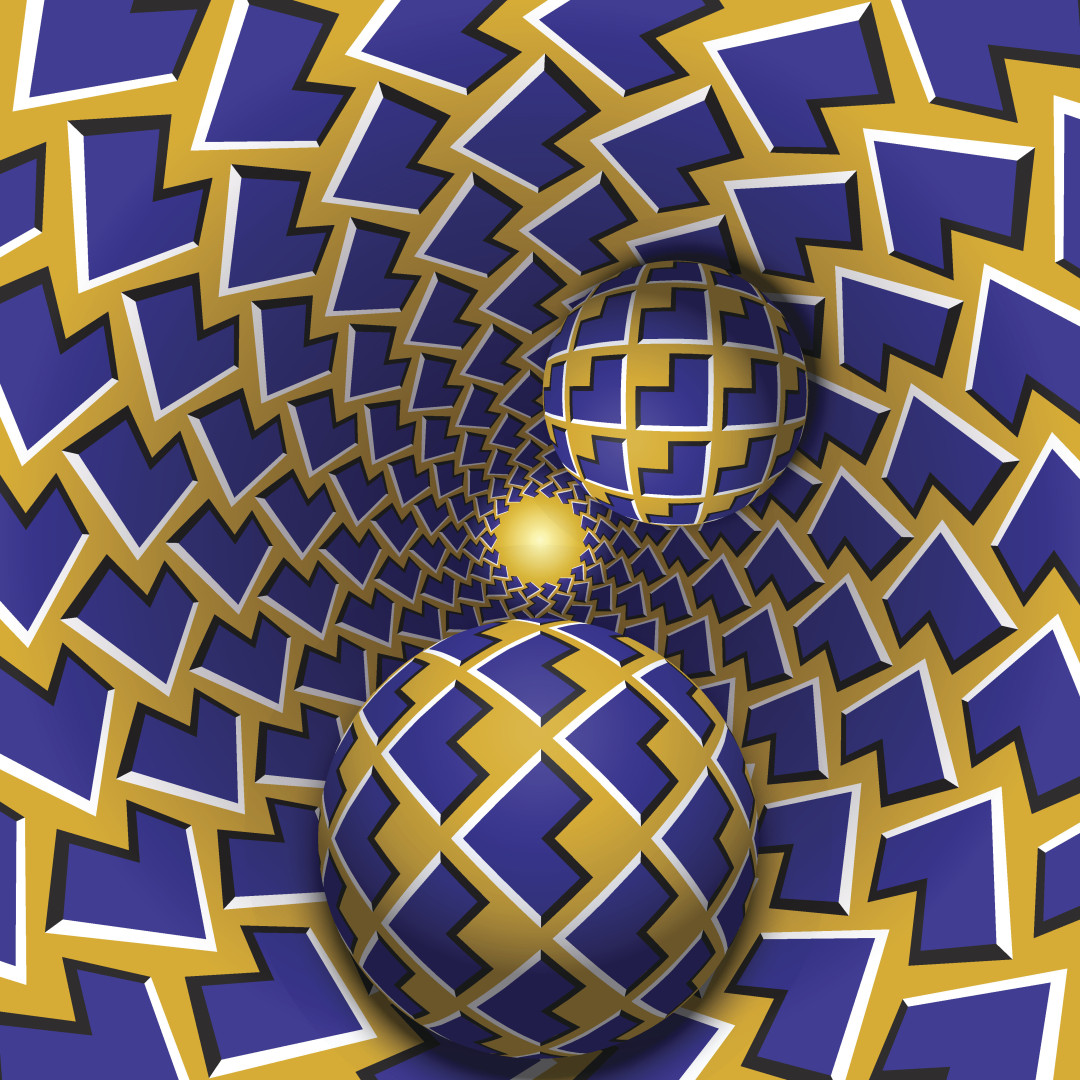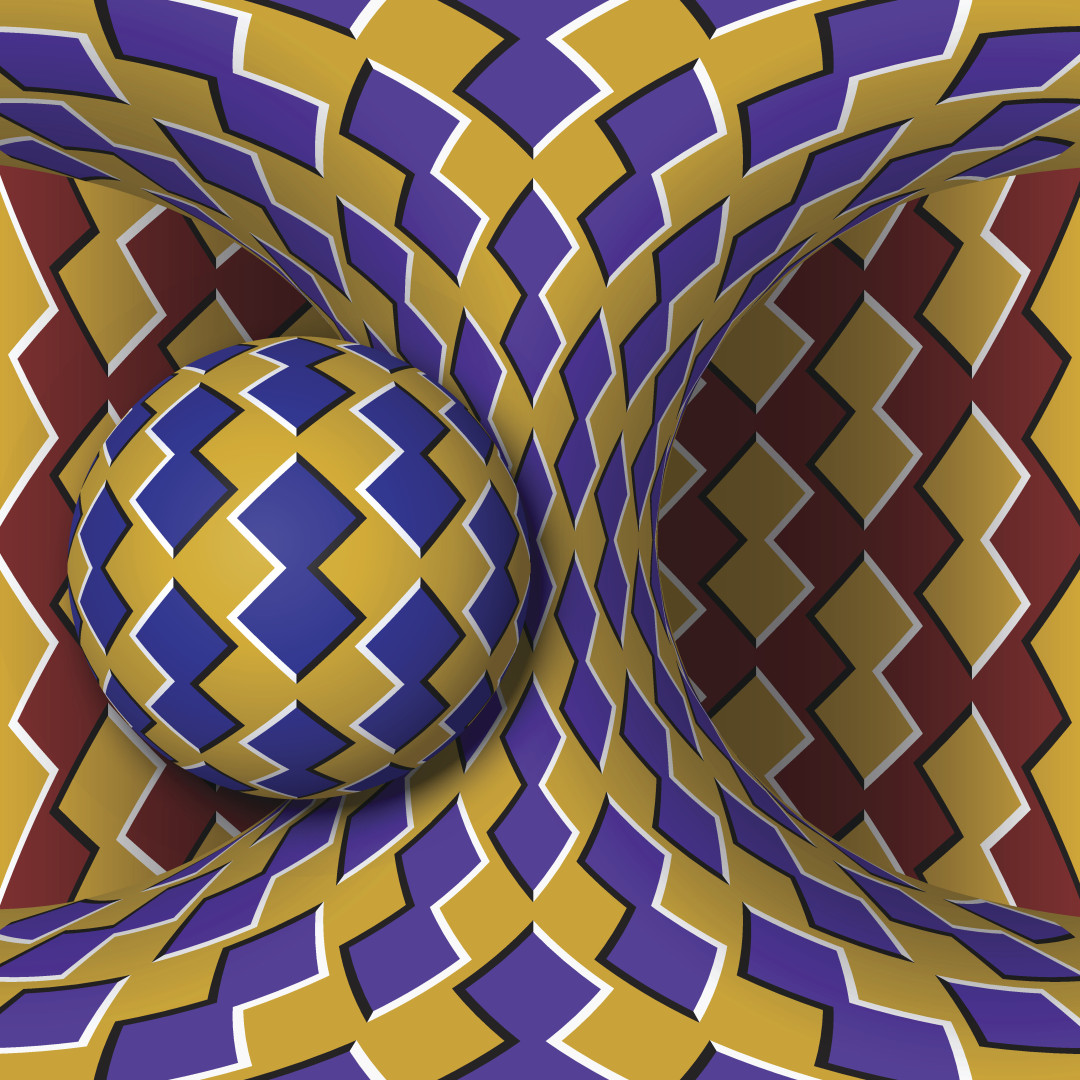





























See Also
See Again
© Getty Images
0 / 30 Fotos
Clay columns or two ladies talking? - If you focus on the white, you'll recognize three clay columns on a black background. But concentrate on the black patterns and you'll become aware of two female figures facing each other.
© Shutterstock
1 / 30 Fotos
Impossible cube - Another Escher mind-bender, the impossible cube initially appears as a perspective drawing but further scrutiny reveals several impossible features.
© iStock
2 / 30 Fotos
Penrose stairs - British psychiatrist and mathematician Lionel Penrose created an impossible staircase that makes 90-degree turns in ascending and descending order to form a never-ending loop.
© iStock
3 / 30 Fotos
Penrose triangle - The impossible tribar was in fact first conceptualized by Swedish graphic artist Oscar Reutersvärd. It is another amazing example of an impossible object.
© iStock
4 / 30 Fotos
Perception of depth - This image plays with your perception of depth. Is the tall person really balancing a short person in the palm of their hand? No. The "small" figure is just standing further back from the foreground.
© iStock
5 / 30 Fotos
'Day and Night' (1938) - M. C. Escher was a famous graphic artist who created works of art depicting optical illusions. In 'Day and Night' your eye can choose to see either a flock of white birds flying east, or black birds flying west, depending on where place the foreground.
© iStock
6 / 30 Fotos
What do you see? - What do you see here? A tree, or the profiles of two faces? It all depends on whether you focus on a black or white background.
© iStock
7 / 30 Fotos
Impossible trident - Also known as the Devil's Tuning Fork, this illusion was created by D.H. Schuster in 1964. When you look at the end of the "fork" it appears as if it features three prongs. But examine it from the top and it's clear only two exist.
© Shutterstock
8 / 30 Fotos
Rotating Snakes - The Rotating Snakes illusion was created by psychology professor Akiyoshi Kitaoka. It is a trick of the mind—the image is totally static, but the banded "snakes" appear to be going round in circles!
© iStock
9 / 30 Fotos
Illusory motion - Here is a similar image that appears to be on the move when in fact it is entirely stationary. This type of illusion is referred to as illusory motion.
© iStock
10 / 30 Fotos
Illusory motion
- According to Mother Nature Network, the "motion" is created by the positioning of the shapes and contrasting colors.
© iStock
11 / 30 Fotos
Illusory motion - Another "moving" picture that in fact is perfectly still.
© iStock
12 / 30 Fotos
Illusory motion - Truth is, scientists are not exactly sure why the brain is tricked into thinking that something that is motionless appears to move or rotate. But theories abound.
© iStock
13 / 30 Fotos
Illusory motion
- According to the BBC, our retina is receiving so much at once that our brain gets confused and is fooled into thinking movement is occurring when in actual fact it isn't.
© iStock
14 / 30 Fotos
Illusory motion - But if you really focus your eye on one spot in the image, the area stops moving or rotating.
© Shutterstock
15 / 30 Fotos
Scintillating grid illusion - If you're seeing tiny black dots within the white circle, you're not alone. This is an illusion! It's considered a variation of the Hermann grid.
© iStock
16 / 30 Fotos
Ebbinghaus illusion - Look closely. Is the blue circle on the right larger than the one on the left? They are both exact the same size! The circle on the left is surrounded by large circles so we naturally assume it is smaller than the circle on the right, which is surrounded by smaller circles thus making it appear bigger.
© Shutterstock
17 / 30 Fotos
Müller-Lyer illusion
- The top line appears longer, right? Wrong. Both lines are exactly the same length. One theory is that our brain is interpreting the arrowheads as corners, which helps us determine depth and distance, as explained by New World Encyclopedia.
© Shutterstock
18 / 30 Fotos
Café wall illusion - In this illusion the lines dividing the squares appear to be crooked and uneven, but in fact they run perfectly parallel to one another. Neurons interacting with the brain are responding to the light and dark colors in the image. The retina dims parts of the dividing lines, making them appear slanted.
© Shutterstock
19 / 30 Fotos
Zöllner illusion - Likewise, the parallel lines in this optical illusion appear unaligned, but in fact they are absolutely parallel to one another. One theory as to why this happens is that the brain exaggerates acute angles while underestimating obtuse angles. This causes the eye to interpret the lines as going off in different directions.
© Shutterstock
20 / 30 Fotos
Hering illusion
- This geometrical-optical illusion also confuses the brain. The red lines appear to bow outwards and the blue lines inwards. But again, they all are parallel to one another.
© Shutterstock
21 / 30 Fotos
Fraser spiral illusion
- This example gives the impression of an endless plunge through an infinite spiral. Not at all! It's just a series of concentric circles. According to Illusion Works, the illusion plays on the orientation-sensitive simple cells and simple image processing occurring at the retina.
© Shutterstock
22 / 30 Fotos
Checker shadow illusion
- MIT Professor of Vision Science Edward H. Adelson created this optical illusion in which the two boxes marked with an 'x' seem to be two completely different shades, but in reality, are exactly the same in color. The brain uses relative color and shading to determine the color of things found all around us, according to All That's Interesting.
© Shutterstock
23 / 30 Fotos
Kanizsa triangle
- If you see a triangle, your eyes are again playing tricks on you. This is an example of the "phantom edge phenomena," which neuropsychologists call the "T-effect." As noted in New World Encyclopedia, neural cells recognize breaks between shapes and will assume there is in fact a line creating a shape that doesn't actually exist.
© Shutterstock
24 / 30 Fotos
Ames room - This is another kind of optical illusion which distorts the sizes of people when in fact it is the room that is irregular. The floor and ceiling are at an incline, and one corner of the room is actually closer to the viewer than the other. What results is one figure appearing as a giant while another seems tiny.
© Reuters
25 / 30 Fotos
Horsetail Falls, USA - Some optical illusions occur in the natural world. The phenomenon seen here occurs in February at Horsetail Falls, in California's Yosemite National Park. When the setting sun hits the falls at just the right time, it appears as if lava, rather than water, is cascading down the cliff edge.
© Reuters
26 / 30 Fotos
Atlas moth
- Quick! What animal do you see here? A butterfly, or a collection of snakes? Actually this is an Atlas moth which, according to The Telegraph, uses the ends of its snake-patterned wings to scare off predators. To complete the illusion, the moth falls to the ground and withers around...just like a real snake!
© Shutterstock
27 / 30 Fotos
The perfect snapshot - Some illusions occur when photographs are snapped at precisely the right moment. Here, a photo taken during a football match, French player Mathieu Valbuena appears to have shrunk in size! In fact, Valbuena was just leaning back while going for the ball, inadvertently creating a spectacular and hilarious image.
© Reuters
28 / 30 Fotos
The Invisible Man
- And in this creative image, Chinese artist Liu Bolin "vanishes" as he blends himself into a comic book stand. He actually uses paint on himself to brilliant camouflage effect. See also: Highway to hell: Spooky stories set along Route 66
© Reuters
29 / 30 Fotos
© Getty Images
0 / 30 Fotos
Clay columns or two ladies talking? - If you focus on the white, you'll recognize three clay columns on a black background. But concentrate on the black patterns and you'll become aware of two female figures facing each other.
© Shutterstock
1 / 30 Fotos
Impossible cube - Another Escher mind-bender, the impossible cube initially appears as a perspective drawing but further scrutiny reveals several impossible features.
© iStock
2 / 30 Fotos
Penrose stairs - British psychiatrist and mathematician Lionel Penrose created an impossible staircase that makes 90-degree turns in ascending and descending order to form a never-ending loop.
© iStock
3 / 30 Fotos
Penrose triangle - The impossible tribar was in fact first conceptualized by Swedish graphic artist Oscar Reutersvärd. It is another amazing example of an impossible object.
© iStock
4 / 30 Fotos
Perception of depth - This image plays with your perception of depth. Is the tall person really balancing a short person in the palm of their hand? No. The "small" figure is just standing further back from the foreground.
© iStock
5 / 30 Fotos
'Day and Night' (1938) - M. C. Escher was a famous graphic artist who created works of art depicting optical illusions. In 'Day and Night' your eye can choose to see either a flock of white birds flying east, or black birds flying west, depending on where place the foreground.
© iStock
6 / 30 Fotos
What do you see? - What do you see here? A tree, or the profiles of two faces? It all depends on whether you focus on a black or white background.
© iStock
7 / 30 Fotos
Impossible trident - Also known as the Devil's Tuning Fork, this illusion was created by D.H. Schuster in 1964. When you look at the end of the "fork" it appears as if it features three prongs. But examine it from the top and it's clear only two exist.
© Shutterstock
8 / 30 Fotos
Rotating Snakes - The Rotating Snakes illusion was created by psychology professor Akiyoshi Kitaoka. It is a trick of the mind—the image is totally static, but the banded "snakes" appear to be going round in circles!
© iStock
9 / 30 Fotos
Illusory motion - Here is a similar image that appears to be on the move when in fact it is entirely stationary. This type of illusion is referred to as illusory motion.
© iStock
10 / 30 Fotos
Illusory motion
- According to Mother Nature Network, the "motion" is created by the positioning of the shapes and contrasting colors.
© iStock
11 / 30 Fotos
Illusory motion - Another "moving" picture that in fact is perfectly still.
© iStock
12 / 30 Fotos
Illusory motion - Truth is, scientists are not exactly sure why the brain is tricked into thinking that something that is motionless appears to move or rotate. But theories abound.
© iStock
13 / 30 Fotos
Illusory motion
- According to the BBC, our retina is receiving so much at once that our brain gets confused and is fooled into thinking movement is occurring when in actual fact it isn't.
© iStock
14 / 30 Fotos
Illusory motion - But if you really focus your eye on one spot in the image, the area stops moving or rotating.
© Shutterstock
15 / 30 Fotos
Scintillating grid illusion - If you're seeing tiny black dots within the white circle, you're not alone. This is an illusion! It's considered a variation of the Hermann grid.
© iStock
16 / 30 Fotos
Ebbinghaus illusion - Look closely. Is the blue circle on the right larger than the one on the left? They are both exact the same size! The circle on the left is surrounded by large circles so we naturally assume it is smaller than the circle on the right, which is surrounded by smaller circles thus making it appear bigger.
© Shutterstock
17 / 30 Fotos
Müller-Lyer illusion
- The top line appears longer, right? Wrong. Both lines are exactly the same length. One theory is that our brain is interpreting the arrowheads as corners, which helps us determine depth and distance, as explained by New World Encyclopedia.
© Shutterstock
18 / 30 Fotos
Café wall illusion - In this illusion the lines dividing the squares appear to be crooked and uneven, but in fact they run perfectly parallel to one another. Neurons interacting with the brain are responding to the light and dark colors in the image. The retina dims parts of the dividing lines, making them appear slanted.
© Shutterstock
19 / 30 Fotos
Zöllner illusion - Likewise, the parallel lines in this optical illusion appear unaligned, but in fact they are absolutely parallel to one another. One theory as to why this happens is that the brain exaggerates acute angles while underestimating obtuse angles. This causes the eye to interpret the lines as going off in different directions.
© Shutterstock
20 / 30 Fotos
Hering illusion
- This geometrical-optical illusion also confuses the brain. The red lines appear to bow outwards and the blue lines inwards. But again, they all are parallel to one another.
© Shutterstock
21 / 30 Fotos
Fraser spiral illusion
- This example gives the impression of an endless plunge through an infinite spiral. Not at all! It's just a series of concentric circles. According to Illusion Works, the illusion plays on the orientation-sensitive simple cells and simple image processing occurring at the retina.
© Shutterstock
22 / 30 Fotos
Checker shadow illusion
- MIT Professor of Vision Science Edward H. Adelson created this optical illusion in which the two boxes marked with an 'x' seem to be two completely different shades, but in reality, are exactly the same in color. The brain uses relative color and shading to determine the color of things found all around us, according to All That's Interesting.
© Shutterstock
23 / 30 Fotos
Kanizsa triangle
- If you see a triangle, your eyes are again playing tricks on you. This is an example of the "phantom edge phenomena," which neuropsychologists call the "T-effect." As noted in New World Encyclopedia, neural cells recognize breaks between shapes and will assume there is in fact a line creating a shape that doesn't actually exist.
© Shutterstock
24 / 30 Fotos
Ames room - This is another kind of optical illusion which distorts the sizes of people when in fact it is the room that is irregular. The floor and ceiling are at an incline, and one corner of the room is actually closer to the viewer than the other. What results is one figure appearing as a giant while another seems tiny.
© Reuters
25 / 30 Fotos
Horsetail Falls, USA - Some optical illusions occur in the natural world. The phenomenon seen here occurs in February at Horsetail Falls, in California's Yosemite National Park. When the setting sun hits the falls at just the right time, it appears as if lava, rather than water, is cascading down the cliff edge.
© Reuters
26 / 30 Fotos
Atlas moth
- Quick! What animal do you see here? A butterfly, or a collection of snakes? Actually this is an Atlas moth which, according to The Telegraph, uses the ends of its snake-patterned wings to scare off predators. To complete the illusion, the moth falls to the ground and withers around...just like a real snake!
© Shutterstock
27 / 30 Fotos
The perfect snapshot - Some illusions occur when photographs are snapped at precisely the right moment. Here, a photo taken during a football match, French player Mathieu Valbuena appears to have shrunk in size! In fact, Valbuena was just leaning back while going for the ball, inadvertently creating a spectacular and hilarious image.
© Reuters
28 / 30 Fotos
The Invisible Man
- And in this creative image, Chinese artist Liu Bolin "vanishes" as he blends himself into a comic book stand. He actually uses paint on himself to brilliant camouflage effect. See also: Highway to hell: Spooky stories set along Route 66
© Reuters
29 / 30 Fotos
Optical illusions that will make you question what you're seeing
Could it be that your eyes are tricking you?
© Getty Images
We use our vision every day. But can we always trust what we see? These incredible optical illusions will have you rubbing your eyes and second-guessing yourself! Click through this gallery and take a look at these mind-boggling images.
RECOMMENDED FOR YOU




































MOST READ
- Last Hour
- Last Day
- Last Week








